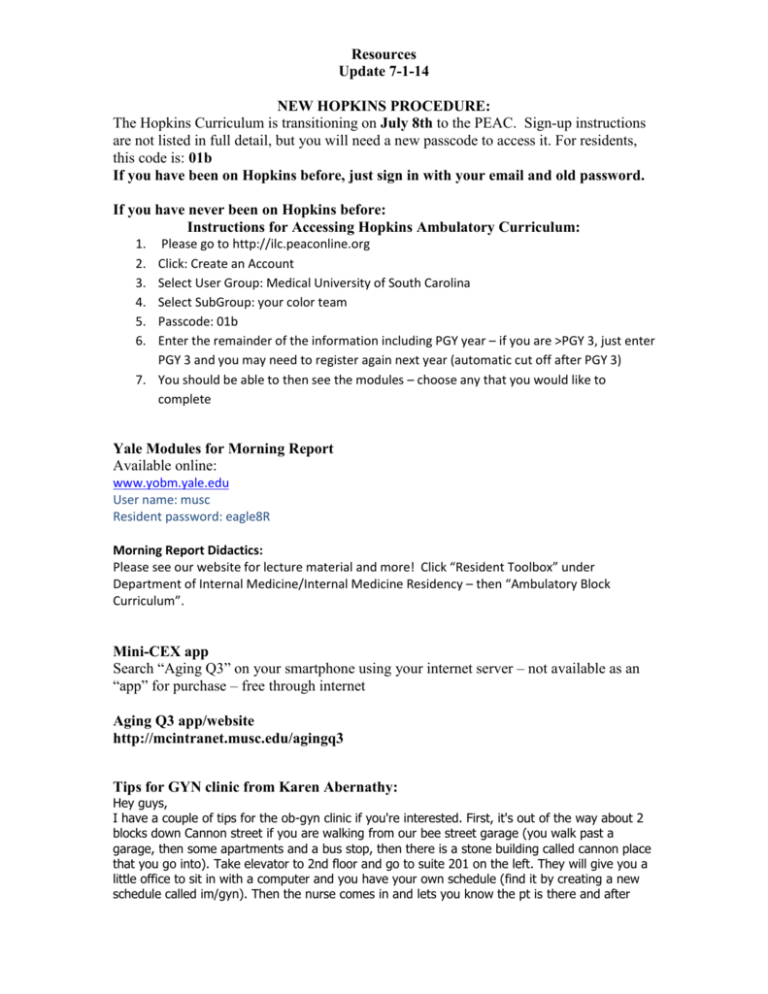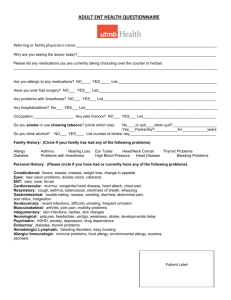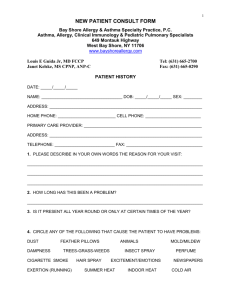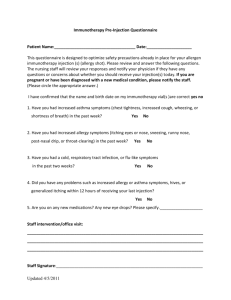Resources - Clinical Departments - Medical University of South
advertisement

Resources Update 7-1-14 NEW HOPKINS PROCEDURE: The Hopkins Curriculum is transitioning on July 8th to the PEAC. Sign-up instructions are not listed in full detail, but you will need a new passcode to access it. For residents, this code is: 01b If you have been on Hopkins before, just sign in with your email and old password. If you have never been on Hopkins before: Instructions for Accessing Hopkins Ambulatory Curriculum: 1. 2. 3. 4. 5. 6. Please go to http://ilc.peaconline.org Click: Create an Account Select User Group: Medical University of South Carolina Select SubGroup: your color team Passcode: 01b Enter the remainder of the information including PGY year – if you are >PGY 3, just enter PGY 3 and you may need to register again next year (automatic cut off after PGY 3) 7. You should be able to then see the modules – choose any that you would like to complete Yale Modules for Morning Report Available online: www.yobm.yale.edu User name: musc Resident password: eagle8R Morning Report Didactics: Please see our website for lecture material and more! Click “Resident Toolbox” under Department of Internal Medicine/Internal Medicine Residency – then “Ambulatory Block Curriculum”. Mini-CEX app Search “Aging Q3” on your smartphone using your internet server – not available as an “app” for purchase – free through internet Aging Q3 app/website http://mcintranet.musc.edu/agingq3 Tips for GYN clinic from Karen Abernathy: Hey guys, I have a couple of tips for the ob-gyn clinic if you're interested. First, it's out of the way about 2 blocks down Cannon street if you are walking from our bee street garage (you walk past a garage, then some apartments and a bus stop, then there is a stone building called cannon place that you go into). Take elevator to 2nd floor and go to suite 201 on the left. They will give you a little office to sit in with a computer and you have your own schedule (find it by creating a new schedule called im/gyn). Then the nurse comes in and lets you know the pt is there and after Resources Update 7-1-14 seeing them, you can check out to the attending. The attending will go with you if you are uncomfortable with doing any thing like a pap smear or whatever. If you are going to do anything like a pap, gonorrhea/chalmydia etc. make sure you put in an order for that. You don't have to do it prior to the procedure, just make sure it gets put in soon after (gonorrhea and chlamydia are separate orders, there is a drop down box with specimen type you have to fill in; liquid based pap smear is the title for the pap order). If there is a wet prep needed the attending will show you where the supplies are and how to prepare a smear to look at. To actually sign your note you have to sign in under the obgyn department instead of internal medicine which is a pain because you have to get epic to actually add it for you. I'm sending Dr Brownfield an email about possibly letting epic know at the beginning of the month a list of names so we don't have that hassle. (Editor’s note: done) This is what attendings want to know about annual visits when you present - Age, G P A L with LMP on this date currently taking (HRT or OCP or nothing) here today for annual exam. - sexually active? using condoms? (important to counsel about this even if they are taking birth control and consider testing for GC/HIV if not in long term monogamous relationship) - menstrual frequency, duration, heavy vs light flow - vaginal discharge/irritation/sexual issues or pain? - breast symptoms? - screening they've had? > 21 yrs - know last pap and should have pap every 2 years > 30 yrs - know last pap and if ever HPV tested, needs pap every 5 years > 65 - don't need paps anymore >40 yrs mammogram, >65 dexa scan - Pmhx, meds, social history, family history of GU or breast disorders - what type of birth control, are they interested in trying something different If it's not an annual exam, and they are presenting with symptoms just focus on that and you don't have to do the whole thing I just listed. For vaginitis symptoms you have to do a wet prep: BV - + odor on whiff test, pH >4.5, clue cells, treat with metronidazole 500mg BID x 7 days Trichomonas - + odor on whiff test, ph >4.5, motile trichs, metronidazole 2gm once (or same as BV if HIV positive), treat partners Yeast - no odor on whiff, ph 4.5, pseudohypae, treat with azoles CDC recommends checking gon/chlamydia every year for all women up to 26 years old. www.bedsider.org is a really good website for pts to visit to learn about the different birth control pill options READINGS, ETC for GYN: Hopkins Modules: Gynecology 2013 Menopause and Hormone Replacement Therapy 2013 Yale Curriculum – look under “Archives”: 7Th Edition: Vol 3, Week 6 – Cervical Health; Week 24 – Contraception; Week 25 – PCOS Vol 4, Week 7 – Breast Lump Vol 5, Week 11 – Amenorrhea th 8 Edition: Vol 1, Week 12 – Menopause Resources Update 7-1-14 Up to Date: Vaginitis Terminology and Evaluation of Abnormal Uterine Bleeding and Perimenopausal Bleeding Video on Pap/Pelvic: MUSC Library – Clinical Resources – Procedures Consult – search for “Pap” Dermatology Excellent, free online modules suggested by Dr. Pollack. For medical students, but appropriate for all learners: http://www.aad.org/education/medical-student-core-curriculum Allergy references: Update on Allergic rhinitis. Russell A. Settipane, MD and Philip Lieberman, MD. Annals of Allergy, Asthma and Immunology. Vol 86, May 2001. Distinct features of chronic chronic rhinosinusitis with and without nasal polyps. D Polzehl et al. Allergy 2006:61:1275-1279. Differential he should of chronic sinus disease in his spine measurement of inflammatory mediators She. T. Van Zele et al. allergy 2006:61: 1280-1289 Untangling asthma phenotypes and endotypes. I. Agache et al. Allergy 67:2012:835-846 Asthma exacerbations: Origin, effects and prevention. David J. JAckson et al. Journal of Allergy and Clinical Immunology 2011; 128:1165-74 Remodeling and asthma. Saleh Al-Muhsen et al. Journal of Allergy and Clinical Immunology 2011; 128, #3 From atopic dermatitis 2 asthma: The atopic march. Jonathan M. Spergel, M.D., PhD Annals of Allergy Asthma and Immunology, 2010; 105:99-106 Atopic dermatitis-for new pathophysiologic insights to individualized therapy. N. Novak and D. Simon. Allergy 66 (2011) 8:30 339 Atopic dermatitis. Thomas Bieber, M.D., PhD. New England Journal of Medicine 2008: 358 (14) High titers of IgE antibody to dust mite allergen and risk for wheezing among asthmatic children infected with rhinovirus. Manuel Soto-Quiros et al. Journal of Allergy and Clinical Immunology. 2012; 129(6) Food allergy. Scott H. Sicherer, MD and Hugh A. Sampson, MD. Journal of Allergy and Clinical Immunology 2006; 117(2) Food allergy. Hugh A. Sampson, MD. Journal of Allergy and Clinical Immunology 2003; 111(2) Pathogenesis of chronic urticaria. A.P. Kaplan and M. Greaves. Clinical an experimental allergy, 39, 777-787 Chronic urticaria and angioedema. Allen P. Kaplan, M.D. New England Journal Medicine, volume 346, #3. January 2002






